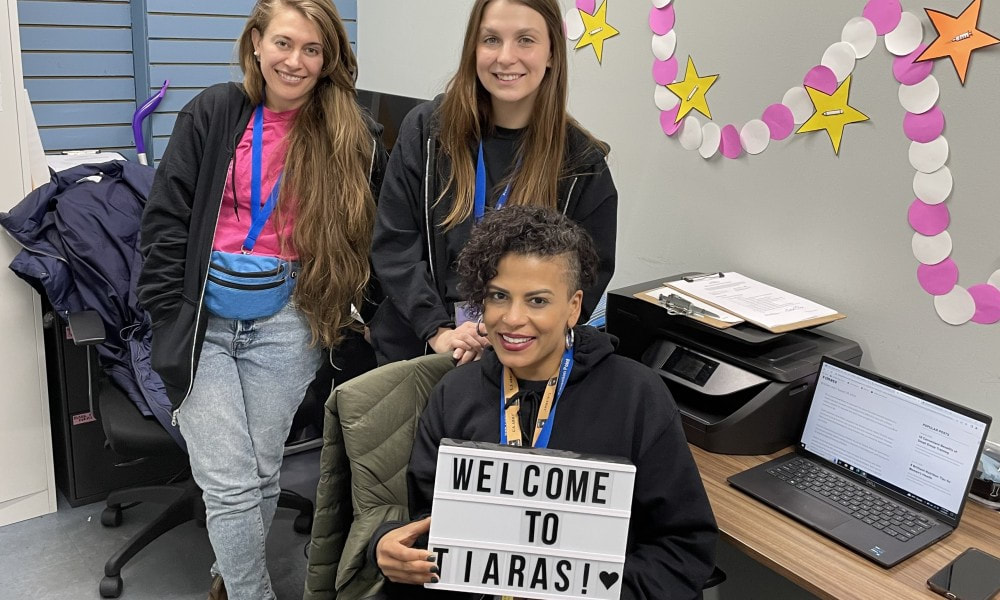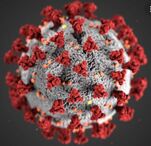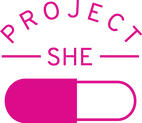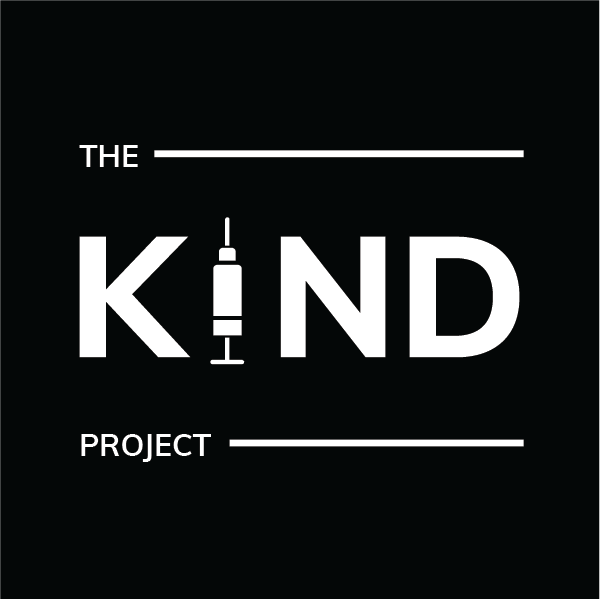Current Projects:
TIARAS
|
Study overview
The goal of TIARAS is to test whether a brief writing intervention designed to address traumatic experiences can reduce women’s HIV risk in the context of substance use. This project is funded by the National Institute of Health and all study activities will occur at Prevention Point Philadelphia, a long-term community partner and the largest syringe services organization in the mid-Atlantic. What problem does this study address? PrEP is an once daily medication that can safely and effectively prevent HIV when taken as prescribed. This study builds on previous research which found that violence, trauma, and financial insecurity negatively influenced women’s ability to take PrEP as directed, and that these same experiences greatly influences women’s HIV risk more broadly. What will you study? This study will test the effects of integrating two evidenced-based interventions on HIV risk among women who inject drugs (WWID). Contingency management (CM) is a strategy shown to reduce drug use and HIV risk by providing small cash incentives for performing targeted behaviors. Expressive writing (EW) is a safe and effective approach for addressing trauma symptoms through guided writing exercises. The goal of this study is to test the hypothesis that EW will boost and extend the benefits of CM to produce durable reductions in HIV risk among WWID. Funder: National Institute on Drug Abuse Study Number: 5R01DA054543-02 |
TIARAS iNNOVATE
|
|
Study Overview
TIARAS iNNVOATE will add new scientific questions to TIARAS that focus on long-acting injectable cabotegravir (CAB-LA), a PrEP product approved for use by the FDA in 2020. Our goal is to collect data to guide implementation efforts to scale-up and scale-out CAB-LA for women who inject drugs. All study activities will occur at Prevention Point Philadelphia, a long-term community partner, and the largest syringe services organization in the mid-Atlantic. What problem does this study address? For daily oral PrEP to be effective, the Centers for Disease Control and Prevention recommends that women take 6 of 7 daily PrEP doses per week. However, WWID face challenges in taking daily oral medication (e.g., lack of a safe place to store or discretely take medications due to housing instability). These challenges undermine the effectiveness of daily oral PrEP as a HIV prevention tool. Long-acting injectable Cabotegravir (CAB-LA) requires little day-to-day action to be effective and could improve PrEP adherence among WWID. However, little is known about how offering CAB-LA within a syringe services program might impact WWID’s engagement in care nor how it impacts staff rolling out this program. What will you study? This study will use an implementation framework to assess differences in PrEP uptake, adherence, persistence, and drug concentration levels in hair between women prescribed CAB-LA versus daily oral PrEP. In addition, we will use qualitative interviews to 1) explore women’s perspectives on each PrEP formulation and 2) examine the experience of staff, administrators, and prescribers charged with implementing CAB-LA within an SSP setting. Our goal is to explore barriers and facilitators to providing this service over time. Funder: Viiv Healthcare |
Wearable device to prevent opioid-related overdose deaths (DOVE)
|
Study overview
DOVE is a wearable device that can prevent opioid. This project seeks to develop a device that can be used to prevent opioid overdose by local and state government, treatment centers, pain clinics, pharmacies, harm reduction organizations, and jails. What problem does the study address? In recent years, the United States has seen an unprecedented number of opioid-related overdoses. This has skyrocketed since the beginning of the COVID-19 pandemic. The current standard of care for reversing an opioid overdose is naloxone. Naloxone works within minutes to combat the effect of opioids on the respiratory system. While this method is reliable, fatal overdoses occur when a bystander is unable to administer naloxone. If left untreated, an opioid overdose can lead to irreversible brain damage within a matter of minutes. DOVE is a wearable device that can sense an opioid overdose. It can be customized to include any combination of the three options: alerting first responders, alerting community members and calling EMS via the UnityPhilly mobile app (www.unityphilly.org), and/or automatically injecting naloxone. What will you study? Given the current opioid overdose rates, there is an urgent need for innovative solutions. This study will examine the feasibility and acceptability of the DOVE device in real-world conditions when used by people who use opioids. Participants will be recruited from several Philadelphia-based community partners , including Prevention Point Philadelphia. Multiple cohorts will help our team design the DOVE by wearing the device and providing feedback. While the device in this pilot will not inject naloxone, it will record information that will be used to further develop the device. Additional work is being done to gain FDA approval, determine insurance coverage options, and develop a patent. |
SAIA-PrEP: a systems analysis and improvement approach to optimize PrEP implementation in syringe service programs
|
Study overview
The goal of this randomized controlled trial (RCT) is to increase access to pre-exposure prophylaxis (PrEP), a safe and effective HIV prevention tool, among clients of syringe services programs (SSPs). The trial will test whether an organization-level intervention, the Systems Analysis and Improvement Approach (SAIA), can help SSPs increase their delivery of PrEP-related services. The study will be implemented in 32 Ending the HIV Epidemic priority jurisdictions nationwide; 16 will be randomized to receive the SAIA-PrEP intervention and 16 will be enrolled in a treatment as usual control arm. By comparing outcomes between the two groups over time, we hope to optimize PrEP services in SSPs. What problem does this study address? Despite the acceptability of PrEP among people who inject drugs (PWID), access remains low, and uptake has lagged far behind that observed in other vulnerable populations. SSPs are uniquely poised to provide PrEP services to their clients as a trusted institution that often serves as the health hub for this group. Further, many SSPs already provide some services along the PrEP delivery cascade such as PrEP education, HIV testing, and linkage to on site and/or external medical services. Despite being ideal venues for improving PrEP access among PWID, our data demonstrate that these agencies need additional support to optimally implement the SSP-based PrEP delivery cascade. What will you study? For a period of 12-months, SSPs in the SAIA-PrEP arm will be paired with a coach that helps them use data to visualize the way clients flow through their services and to identify missed opportunities to engage in PrEP-related care. From these data visualization sessions, SSPs will decide how to modify services to increase patient engagement. Follow-up coaching sessions will assess the impact of each modification and identify additional opportunities to increase client engagement. Data on PrEP-related services delivery (e.g., PrEP education, HIV testing, referrals to PrEP care, and PrEP initiation verification) will be collected over 24-months allowing us to identify initial impacts of SAIA after the 12-month implementation period and the sustained impacts at 24 months. We will also estimate the cost and cost-effectiveness of SAIA relative to SSP in a treatment as usual control arm. Through this study we hope to optimize the SSP-based PrEP delivery cascade. If successful, SAIA could be disseminated to the ≥ 430SSPs nationally and in global settings, carrying the potential for exceptional impact amidst persistent HIV transmission in PWID. Funder: National Institute on Drug Abuse Study Number: 1R01DA056883-01 |
Former Projects:
Comparing Treatment Outcomes in Opioid Use Disorder Before and After the COVID-19 Outbreak in Philadelphia among patients in the Stabilization, Treatment, and Engagement (STEP) Program
|
Study overview
Funded by the Fordham University HIV and Drug Abuse Prevention Research Ethics Training Institute (RETI) via a National Institutes of Health training grant, the goal of this project is to see if there are differences in treatment outcomes between individuals receiving telehealth and face-to-face buprenorphine treatment at Prevention Point Philadelphia (PPP) for opioid use disorder (OUD). Our study capitalizes on the natural experiment provided by the COVID-19 outbreak, which led to relaxed restrictions on telehealth prescribing of buprenorphine. What problem does the study address? A critical component of overdose prevention is the identification and treatment of OUD. However, half of the estimated 2 million individuals suffering from OUD are undiagnosed, and traditional treatment programs are failing to engage even a third of those diagnosed in care, failing to initiate medications for opioid use disorder (MOUD) in a third of those brought into care, and failing to retain most of those in care for >6 months. Providing telehealth buprenorphine treatment may hold promise for improving treatment outcomes, especially for persons who face barriers to attending in-person visits. In response to relaxed MOUD prescribing restrictions during COVID-19, PPP, the largest harm reduction agency in the mid-Atlantic, implemented a “medication first” telemedicine component to their buprenorphine stabilization, treatment, and engagement program (STEP) which emphasizes access to treatment without requiring behavioral health services, in-person attendance, and without urine-based drug screening to assess for adherence and substance use. What will you study? We will compare treatment outcomes between PPP’s STEP program participants receiving telehealth and face-to-face buprenorphine treatment for opioid use disorder. Using data from clinical records and the Pennsylvania Drug Monitoring Program, we will compare treatment outcomes between three groups: 1) new telemedicine patients (estimated sample = 60), 2) continuity patients who switched from face-to-face treatment to telehealth (estimated sample = 183), and 3) historical controls. We will use a variety of statistical tests to compare initiation, adherence, and continuation between the telemedicine group, treatment continuity group, and the historical controls. It our hope that in the case that telehealth MOUD improves treatment outcomes, relaxed restrictions on telemedicine prescribing can continue beyond COVID-19. |
Evaluating Prevention Point Philadelphia’s On-site Drug and Alcohol Treatment Assessment Center
|
Study overview
Funded by the Community Driven Research Day Initiative and the Experiential Learning Opportunities (EXPO) Field Placement sponsored by the Mid-Atlantic Regional Public Health Training Center, the goal of this study is to monitor the implementation and impact of Prevention Point Philadelphia’s (PPP) novel onsite drug and alcohol treatment assessment center on client treatment outcomes. What problem does the study address? Research has shown that when individuals with opioid use disorder (OUD) are placed in the appropriate level of care, they are more likely to be successful with the substance use treatment process. Given the severity of the opioid crisis in Philadelphia, which has been particularly acute in the Kensington neighborhood, in 2021, PPP initiated a new program to provide American Society of Addiction Medicine level of care assessments. These assessments identify which type of addiction treatment program is best aligned with an individual’s needs and helps program staff place participants in treatment programs. Our goal for evaluating PPP’s assessment system is to monitor this new program and report on its outcomes. What will you study? Our team will monitor the implementation of the new program’s processes and evaluate the impact on client treatment outcomes using primary data from interviews and surveys with clients and secondary data from the Pennsylvania prescription drug and monitoring program. It our hope that findings will support quality improvement to enhance client treatment outcomes and satisfaction with the program. |
PACKAGING PRE-EXPOSURE PROPHYLAXIS TO PREVENT HIV TRANSMISSION AMONG WOMEN WHO INJECT DRUGS (Project S.H.E.)
|
Study overview
S.H.E. (Sexual Health Equity) is a community-engaged research project funded by the National Institutes on Drug Abuse (NIDA). The goal of this study is to identify strategies that successfully promote uptake of pre-exposure prophylaxis (PrEP) among women who inject drugs (WWID) who are at risk for HIV. What problem does the study address? Persons who inject drugs (PWID) comprise 3% of the adult population in the United States but 6% of persons acquiring HIV and 18% of persons living with HIV. If HIV goes unchecked, 1 in 23 WWID living in the United States will acquire HIV within their lifetimes. PrEP was approved for use as an HIV prevention strategy in 2012 and recommended as an HIV prevention strategy for PWID in 2013. However, research to bring this prevention strategy to scale is limited. Because PrEP may have particular benefits for women, our goal is to understand what factors impact women's decisions and ability to get on PrEP and stay on PrEP if they believe this is a good HIV prevention tool for them. What will you study? Project S.H.E. will offer participants PrEP care at Prevention Point Philadelphia and facilitate their access to PrEP by helping them enroll in insurance and/or medication assistance programs. During the course of six months, we will use both surveys and interviews to understand what issues impact women’s decisions and ability to get and stay on PrEP. The research will be used to develop long-term programs and interventions that facilitate access to PrEP for WWID. |
KENSINGTON INVENTORY OF NEIGHBORHOOD DYNAMICS (KIND) PROJECT
|
|
Study overview
The KIND (Kensington Inventory of Neighborhood Dynamics) Project is a series of community focused research projects being conducted in partnership with Dr. Stephen Lankenau, funded by the Dornsife School of Public Health. The goal of these studies is to better understand the health of Kensington residents, a neighborhood in Northeastern Philadelphia greatly impacted by the opioid crisis. What problem does the study address? The United States is in the midst of an unprecedented drug overdose epidemic. Drug overdoses killed over 72,000 Americans in 2017, with nearly two-thirds involving a prescription or illicit opioid. In Philadelphia, 1,216 persons died of a drug overdose in 2017, which is a 33% increase compared to 2016. Philadelphia had the 2nd highest drug overdose rate among the nation’s 44 largest counties (surpassed only by Allegheny county which includes Pittsburgh). The Kensington neighborhood and adjacent areas have the highest concentration of overdose deaths in Philadelphia. One possible solution to the crisis is an Overdose Prevention Site (OPS), however, little research has been done to study the health of Kensington residents. Such work is crucial to understanding how OPS might improve health if they are opened in this neighborhood. What will you study? The KIND Project will work to collect, analyze, and disseminate data with assistance from key community members and health organizations such as Prevention Point Philadelphia. This project involves three components. The first aims to determine the public’s opinion regarding drug use in Kensington and the potential opening of an OPS through surveying residents and local business owners and staff. The second aims to characterize community assets and social disorder related to public drug use in Kensington using an environmental checklist. The third will use existing data such as the Southeastern Pennsylvania Household Health Survey, US Census Data and OpenDataPhilly to understand health and health disparities in Kensington. |
FEASIBILITY OF BIOSENSORS TO CHARACTERIZE THE CONTEXT OF OPIOID USE AND RELATED OUTCOMES (SensOD)
|
Study overview
Funded by the Drexel Urban Health Collaborative, the Stein Family Fellowship, and the National Institute on Drug Abuse, SensOD's goal is to see if it’s acceptable and feasible to use wearable biosensors to understand patterns of opioid use over time and to detect dangerous drug events. By dangerous, we mean episodes of use that slow breathing and heart rate to levels associated with fatal overdose. What problem does the study address? The escalating opioid epidemic is one of the most significant public health crises confronting the United States. Overdose deaths (ODD) are now the leading cause of death for persons under 50 years old. In Philadelphia, there were over 1,200 ODD last year which is proportionally more than any other U.S. city. Wearable biosensors may hold promise for intervening on opioid overdoses in real-time, especially for persons who use alone. It is our hope that these devices can be programmed to 1) identify physiological signs of opioid overdose-induced respiratory depression; 2) buzz and ring to alert a person who has overdosed, which may provide enough stimulation to allow for self-administration of naloxone; 3) alarm to alert bystanders of an emergency; and/or 4) automatically trigger a call to emergency medical services to dispatch an overdose response team. First, research is required to understand the barriers to device use to enable effective design, adoption, and implementation. What will you study? SensOD will use wearable biosensors to characterize the physiologic response patterns to drug use among 16 high-volume opioid users over one week. Participants will be recruited from UnityPhilly, a naloxone delivery intervention, using a mobile app to catalyze neighborhood-based response services in Kensington, Philadelphia. We will use the biosensor data to elicit information from participants about their drug use and stress experiences. Machine learning will subsequently be applied to collected data to understand if there are possible warning signs that can be used to predict risky drug use events in order to trigger calls for help in real-time. To learn more about UnityPhilly, click here. |
A DYADIC ANALYSIS OF INTENTION TO DIFFUSE PrEP INFORMATION AMONG WOMEN WHO INJECT DRUGS IN PHILADELPHIA
|
Study overview
The goal of this study is to determine how social network characteristics, such as relationship type and closeness, impact women who inject drugs' (WWID) intention to relay PrEP information to people in their social networks. What problem does the study address? While PrEP could be a useful HIV prevention tool for many WWID, awareness of PrEP among WWID is low. Research shows that social networks can be utilized to deliver peer-to-peer interventions that increase knowledge and practice of HIV prevention behaviors. Because PrEP awareness is low, this study will explore who WWID would be willing and able to share PrEP information with, the formats in which they would deliver PrEP information, and skills needed to participate in a future peer-to-peer PrEP intervention. What will you study? This study will use both qualitative and quantitative social network analysis to understand the meaning of social relationships among WWID, and how characteristics of these relationships impact communications preferences with peers about PrEP. |
Louisiana Partnerships for Success Grant (LaPFS) Evaluation
|
Study overview
LaPFS is funded by the Substance Abuse and Mental Health Services Administration (SAMSHA). Its goal is to prevent the onset and reduce the progression of underage drinking (persons aged 12 to 20) and prescription drug abuse (persons aged 12 to 25). Based on a national survey, by the time they are seniors, over 20% of high school students will have abused a prescription drug. Nationally alcohol contributes to the death of over 4,000 people under the age of 21 every year. These statistics are a few of the outcomes the LaPFS grant aims to ameliorate. What problem does the study address? LaPFS addresses the concerning rates of underage alcohol and prescription drug misuse and related harms in the state of Louisiana. The grant selected ten parishes, called high needs communities (HNCs), that were deemed to both have a high burden and existing infrastructure to implement activities. These HNCs were chosen to receive funds to implement LaPFS related activities. Grant funds are used to strengthen the prevention infrastructure at state and local levels. What will you study? Beginning in 2015, HEAL members began to direct the evaluation of LaPFS. The evaluation uses secondary sources such as surveys, highway safety, and emergency room admittance data to determine whether HNCs reported reductions in underage drinking and prescription drug misuse compared to communities who did not receive LaPFS funds. This project is ongoing with the final evaluation concluding in September 2019. |
Proudly powered by Weebly









